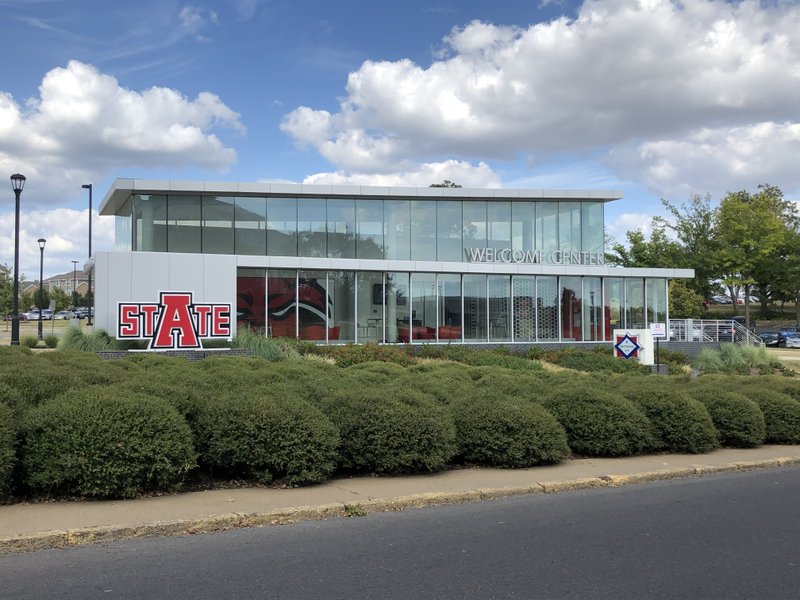With Jonesboro directly in the path of "totality" for next year's solar eclipse, Arkansas State University is using the event as an opportunity for scientific research and exploration.
The university will have a team participating in the Nationwide Eclipse Ballooning Project, sponsored by NASA. This will be the state's only representation in this project, according to Arkansas State. Team members will join other high school and college students from across the country in the project, which will offer real-world STEM experience as students contribute valuable scientific and engineering data through their project. STEM is an acronym for science, technology, engineering, and math.
Arkansas State's team will be split into two groups, one "launching the balloon up-wind" and another "at our antenna array waiting for the balloon to get within range," said Ross Carroll, associate professor of physics in the College of Sciences and Mathematics, who is running the launch and recovery. Mitchell Clay, who works in the Department of Computer Science, is "running our temporary ground station at Petit Jean Mountain [in Conway County] with a suite of radio antennas."
"We'll be one of the dozens of teams looking to take atmospheric measurements and livestreaming video of the moon's shadow from our balloon-borne payloads," Carroll said in a news release from the university. Their balloons will be roughly the size of weather balloons employed by the National Weather Service, but Arkansas State's balloons will be able to lift as much as a dozen pounds of equipment more than 100,000 feet into the atmosphere.
This fall, Clay is teaching a special projects course in computer science focusing on data collection for eclipse ballooning, and Carroll will guest lecture in the class on the physics behind the mission, according to Arkansas State. Clay and Carroll are currently recruiting team members, and students interested in joining can contact them.
Carroll first "got into high altitude ballooning" when he and several others at Arkansas State assisted in filming a 2017 solar eclipse, he said. "We had five students involved with our 2017 research mission, with a handful of others helping with operations on launch day, [and] we're hoping to build up a larger team this time around."
Already a team member is Jacob Rodgers, a senior computer science major from Mountain View.
"This is an exciting opportunity to work on a project with such national significance," Rodgers said in a news release from Arkansas State . "It's an honor to play a small part in something this large, and I'm grateful for the education and experience that will come along with that."
Carroll hopes students "get hooked on the NASA-mission-like experiences and move on to interdisciplinary careers," he said in the news release. "My team will launch our balloon from around Russellville so that it's flying above Mitchell's team on Petit Jean Mountain while the moon's shadow passes by. They'll have a ground station set up to receive our broadcast, then relay that out to a streaming service for NASA's eclipse website."
Montana State University is providing learning materials for the project as well as career development activities for the students, according to Carroll. "We'll get a little over two minutes of total solar eclipse here on campus, but going closer to the central path west of us will get up to four minutes."
Rodgers hopes "to learn a lot from this project, not just about eclipses, but also about the project itself, how the data is collected, how the data is used, all the intricacies involved in a balloon launch, and, of course, learning all the questions I didn't even know I had about this sort of project," he said. "Since we only have one shot at collecting data from the eclipse, we have to make sure everything works as expected beforehand. There won't be any do-overs if our equipment doesn't work. Additionally, at higher altitudes there are a lot of considerations for our equipment that wouldn't really be a problem on the ground."
Carroll and his teammates are actually studying a couple of eclipses, he said. On Oct. 14, "there will be a special type of partial eclipse called an annular eclipse," and in Arkansas, "we'll get a partial eclipse -- and a perfect opportunity for a test run leading up to the April 8, 2024, total solar eclipse."
"Eclipses happen regularly on Earth; they just don't happen often in the same spot," Carroll said. "The last total eclipse that passed through Arkansas was in 1918, and the next one after this upcoming eclipse will be in 2045."
"What excites me about this project is the chance to bring students and faculty at Arkansas State University along on a mission to experience a natural wonder that will leave a lasting impact on their careers," he added. "We have a chance to see the sun's outer atmosphere that's normally lost in the glare and -- if everything works out -- feed a live public video of the moon's shadow racing across Arkansas."
